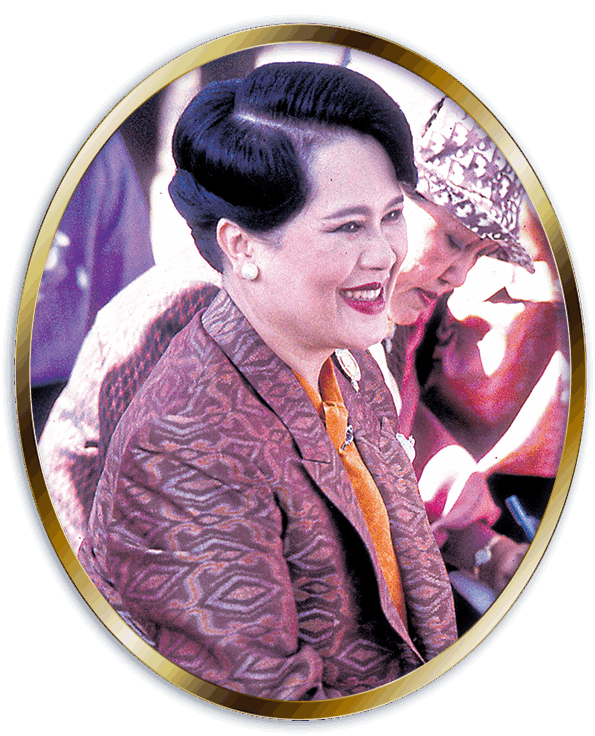
Every child sees their mother as a hero and pillar of strength. The same goes for His Majesty the King Maha Vajiralongkorn Phra Vajiraklaochaoyuhua who has always had Her Majesty Queen Sirikit the Queen Mother as his greatest supporting figure.
A television reporter in the United States once asked Queen Sirikit to name her favourite hobby or pastime. Her reply was “Looking after my children.” All of her royal duties at that time were once estimated to come out to at least one official function every day of the year. Despite this, Queen Sirikit never failed to arrange her schedule and allocate her time in a way that she would be able to spend as much time as possible with her four children.
The aforementioned media interview in America best explains her devotion to her maternal responsibilities. Despite her busy schedule, she has always been committed to performing her motherly tasks for her three daughters and her only son, who would become the future King of Thailand.
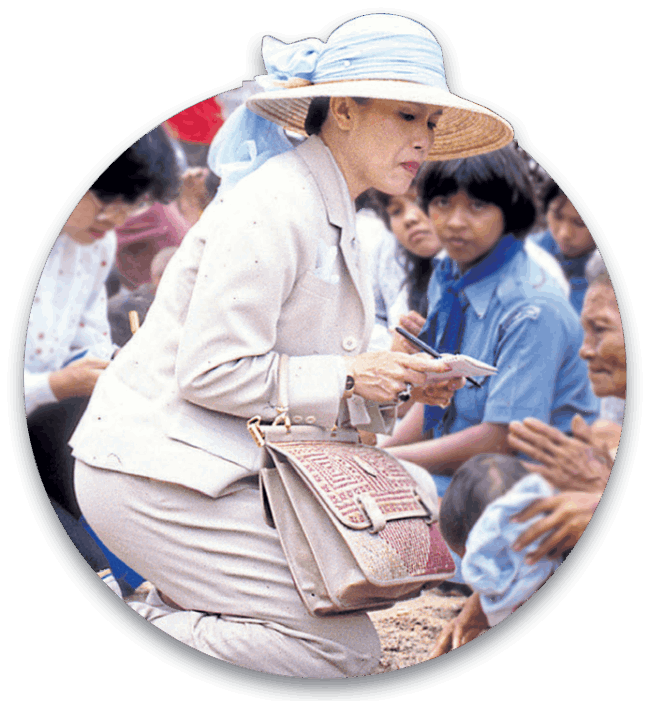
Born in Bangkok on Aug 12, 1932, this year marks the 87th birthday of Her Majesty Queen Sirikit the Queen Mother. The eldest daughter of ML Bua (Snidwongse) Kitiyakara and MC Nakhatra Mongkol Kitiyakara, Queen Sirikit — then MR Sirikit Kitiyakara — began her formal education at Rajini School in Bangkok and was later transferred to St Francis Xavier School at the start of World War II.
With her father appointed as the Siamese ambassador to France and the United Kingdom, MR Sirikit continued her education in Europe, where her focus was the study of languages and music. She was so talented at music that once she even considered becoming a concert pianist.
While in Europe, she met the young King Bhumibol, who was then studying in Switzerland. When their romance fully blossomed, the royal engagement was announced in 1949 and the royal wedding was organised in the following year on April 28.
Only a week after the royal wedding, His Majesty King Bhumibol’s coronation ceremony was carried out, where he elevated his royal consort to the full rank of Her Majesty Queen Sirikit. She was later bestowed the title of Phra Nang Chao Borom Rajini Nart which means “Full Reigning Queen”.
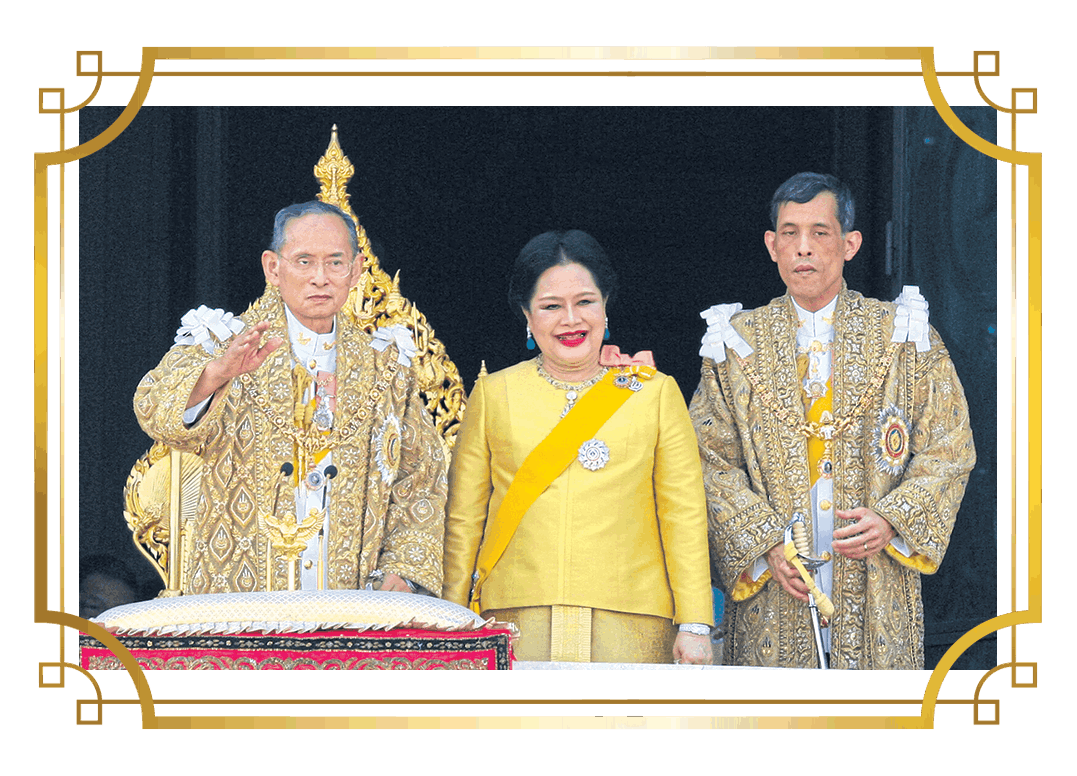
Always seen standing by the side of King Bhumibol as he performed his royal duties across Thailand, Queen Sirikit’s compassion for all Thais has been witnessed time and again. Be they urban slum dwellers, hill tribe people, HIV/Aids-infected patients, women in despair and even people in the violencestricken southern provinces, Queen Sirikit has always been their beacon of hope and encouragement.
On May 5 this year, when the coronation of His Majesty King Maha Vajiralongkorn Phra Vajiraklaochaoyuhua took place, Queen Sirikit was named Her Majesty Queen Sirikit the Queen Mother, reflecting the untiring commitment she has always had as a mother.
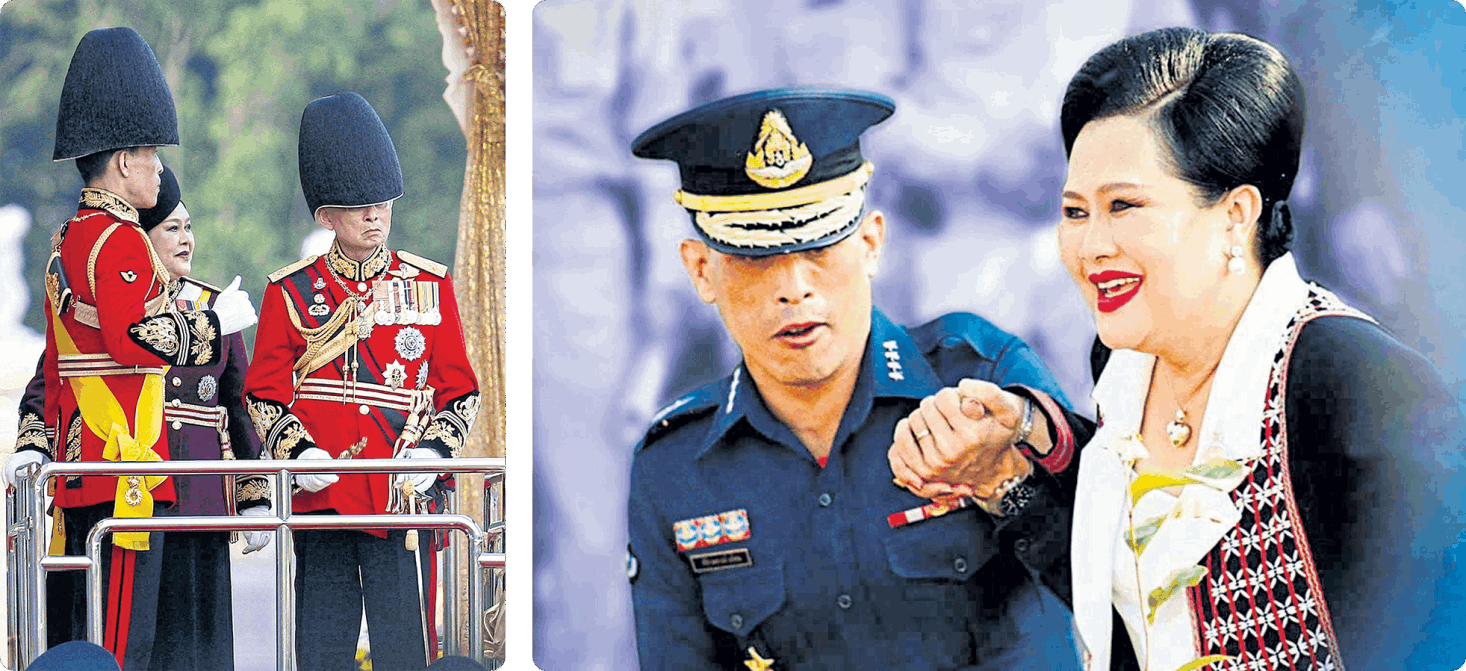
Long known as “the most beautiful queen in the world”, not just for the late King Bhumibol and the royal family, but for all Thais, she is an illuminating light that gives hope and strength to those who need it the most.
After the 1930s, Thailand’s performing arts landscape, especially the khon masked dance, shrank significantly amid the massive waves of Western art forms that flooded Thai society.
If it had not been for Her Majesty Queen Sirikit the Queen Mother, khon would not have been revived to regain its popularity among audiences of all ages, as is the case today.
Records show that khon existed since the Ayutthaya period, reaching its peak in terms of popularity in the early Rattanakosin era. A performance that combines traditional dance and acting, khon basically depicts episodes from the Ramakien, Thailand’s national epic, derived from India’s Ramayana.
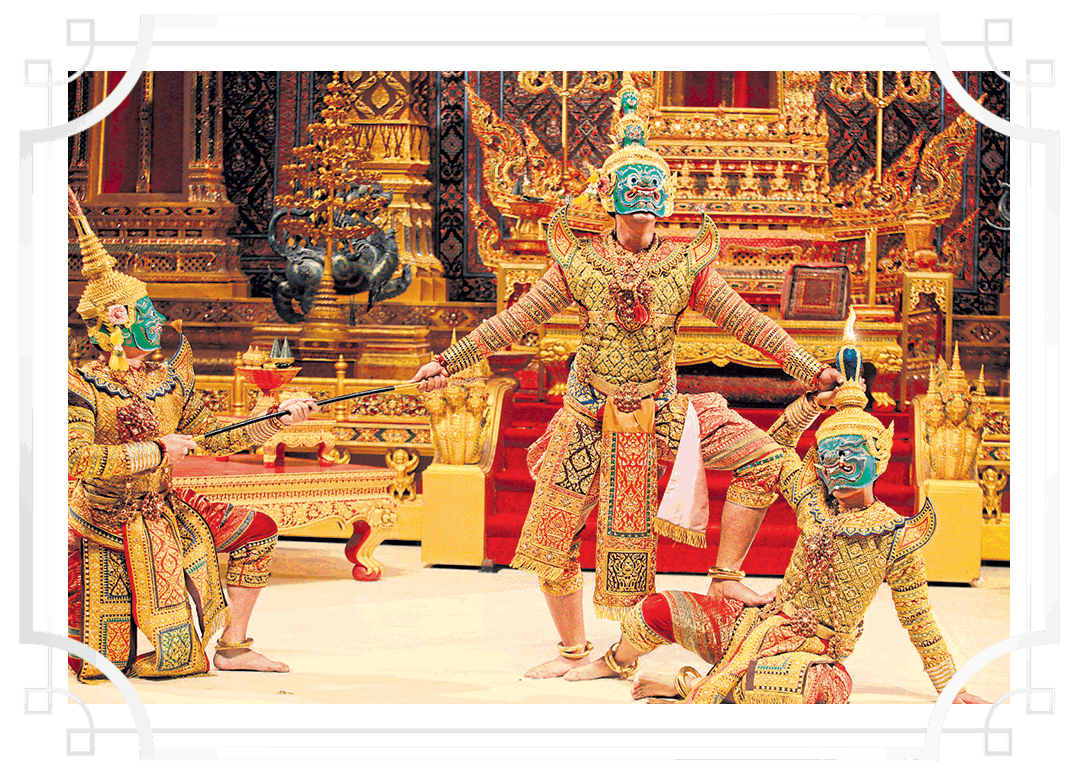
The Ramakien tells the story of Rama, the reincarnation of Vishnu, after he is banished by his stepmother to spend 14 years in exile. While in exile, Rama’s wife Sita is abducted by the 10-faced demon king Ravana (or Thotsakan) and taken to his city of Lanka. To rescue his wife, Rama and his brother Lakshman team up with monkey warriors for a great battle.
According to the study “The Khon Performance Of The Support Foundation Of Her Majesty Queen Sirikit: A Process Of Creation, Conservation and Model Development” by independent researcher Nakarin Namjaidee, the popularity of khon drastically dwindled after the 1932 Siamese Revolution. Changes made to the costumes and storylines diluted its charm, turning more and more people off.
Queen Sirikit realised the importance of preserving khon and regularly staged performances for royal guests in Thailand and for her hosts when she travelled abroad. However, she noticed that several elements of the show were not up to standard. When HRH Princess Maha Chakri Sirindhorn pointed out that khon had lost its popularity, Queen Sirikit responded “If no one watches it, then I will.”
Queen Sirikit’s tireless efforts and full dedication towards the revival of the masked dance eventually brought about the Support Foundation’s debut khon performance in 2007. That year, the troupe staged the Prommas episode of the Ramakien, the culmination of years of laborious and meticulous work.
The foundation staged Prommas again in 2009, followed by Nang Loy in 2010, Suek Maiyarap in 2011, Jong Tanon in 2012, The Battle Of Kumbhakarn — Mokasak in 2013, The Battle Of Indrajit — Nagabas in 2014, The Battle Of Indrajit — Prommas in 2015 and The Allegiance Of Phiphek last year.
In her birthday speech of August 2009, Queen Sirikit urged authorities to properly preserve this classical art form. Today the Support Foundation’s annual khon performance never fails to entertain. Once at serious risk of being lost entirely, under Queen Sirikit’s never- ending commitment to preserve this exquisite performing art, khon is now renowned for its meticulously-produced costumes, masks and stunning props among audiences not just in Thailand, but the world over. Thanks to Queen Sirikit’s royal patronage, this enturies-old tradition has risen to new heights.
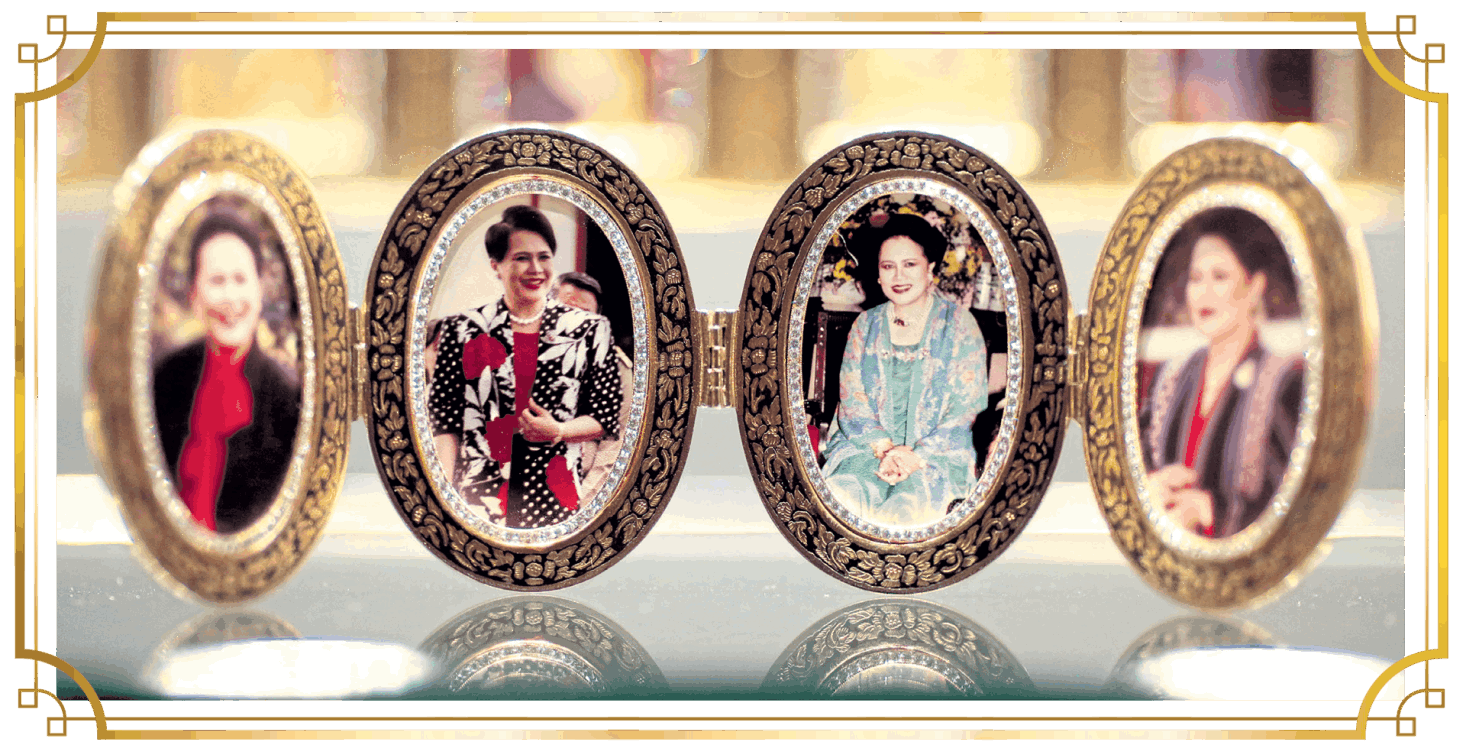
Her Majesty Queen Sirikit the Queen Mother is widely known as “The Patroness of Thai Crafts” for her dedication to preserving and supporting folk handicrafts.
Her love and devotion to traditional Thai crafts began in the 1960s when she and His Majesty King Bhumibol Adulyadej The Great travelled throughout the country to establish projects designed to alleviate poverty and mitigate natural disasters through innovative agricultural projects, reforestation schemes, construction of health clinics, and skills training.
Queen Sirikit was committed to the improvement of daily life for all rural Thais. She found that traditional activities such as weaving and basketry had steadily declined and the rejuvenation of traditional crafts in rural communities might also invigorate their economies.
Keenly interested in local handicrafts and ethnic clothing, the Queen collected historic samples and catalogued rare textile techniques during these trips. An unexpected source for samples of old regionally woven mudmee (tying and dyeing pattern technique) and other traditional textiles were the cleaning rags used by village women in their homes.
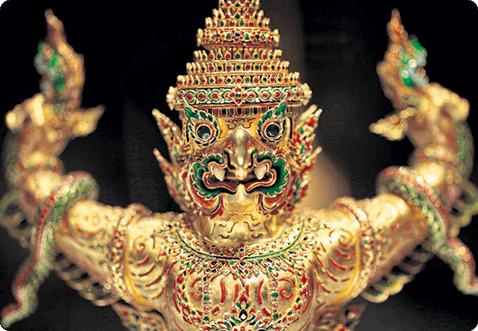
Her Majesty started collecting these rags, recognising these were the remaining examples of a rich and beautiful tradition. She also recognised the increasing adoption of Western-style clothing could render obsolete many of the ethnographic textiles and traditional techniques.
In an effort to preserve cultural identity and promote opportunity, the Queen commissioned village women to weave traditional textiles for her own personal use. She used these newly woven fabrics to make her own clothes which were proudly worn on public occasions. Her public displays inspired new interest in producing these beautiful textiles that had nearly become extinct.
In 1976, she established the Foundation for the Promotion of Supplementary Occupations and Related Techniques (Support Foundation) or Silapacheep in Thai.
The aim of the foundation is to help rural people use their artistic skills and natural resources to produce unique local handicrafts so they can earn additional income which in turn can lead to the revival of many traditional arts. Her Majesty has also personally managed the operation of the foundation and has taken on the position of chairwoman of the board of directors.
Today, the Support Foundation has nine main centres and 145 training facilities in 50 provinces. More than 300,000 people are engaged with the foundation and improving their livelihoods.
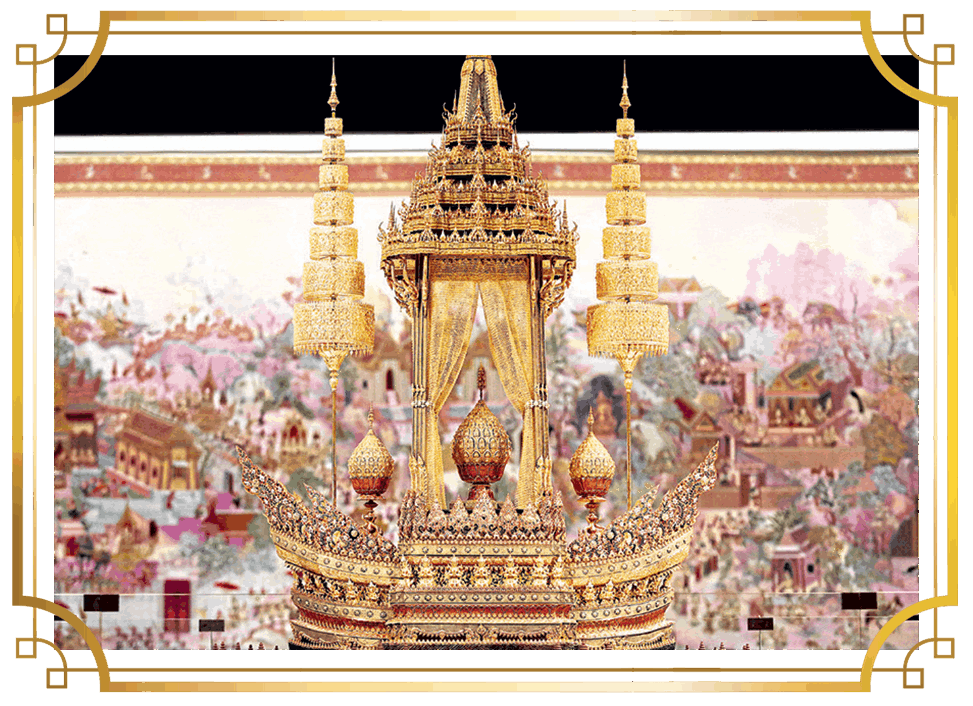
The most well-known support centre is Bang Sai Royal Folk Arts and Crafts Centre in Ayutthaya province where there are various exhibitions of handicrafts from all over Thailand, divided into 32 sections such as yan lipao weaving, silk weaving, ceramic making, carving, glassblowing, teen chok silk weaving and khon mask making.
At the centre, farmers and others from the countryside are trained by highly-skilled craftsmen how to produce and sell handicrafts, which has led to the creation of generations of young people with knowledge of the trade. They are able to make more money for their families, and preserve traditional artistic skills and the heritage of the nation.
Ever since Her Majesty launched the Support project, artworks under the project have been publicised far and wide and enjoyed considerable popularity. They are highly esteemed for their workmanship, value and fair prices.
The primary reason the Support products have gained popularity and admiration so quickly is due to Her Majesty’s dedication. She takes it upon herself to supervise various facets of the operation. According to her suggestions, all categories of Support products have undergone dramatic improvement to reach high quality, exquisite looks and high standards of workmanship. Furthermore, Her Majesty boosts the morale of those involved by regularly using Support products as her personal effects and finery.
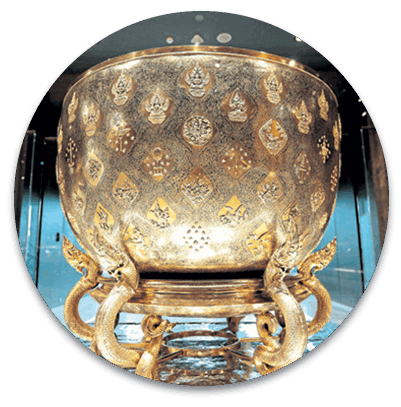
With great pride, Her Majesty also wished to let the world see how simple farmers could create the most beautiful and delicate works of high-class art. She has organised several exhibitions in many countries including the United States, Japan and France to present Thai craft products. One of the Support products popularly known at international level is yan lipao, or items made with the vine of the lipao plant. This vine is fine and strong, and once woven into exquisite objects, has a delicate texture that showcases the meticulous, patient skill of the people who weave it.
Native to Nakhon Si Thammarat province in southern Thailand, the yan lipao fern grows like a vine and the tough fibre has been used for weaving for several centuries. The weaving is often enhanced with gold or silver trim and used to make items such as women’s bags, cigarette boxes and betel nut sets.
Yan lipao handbags are now considered as elegant products and are widely used by Thais and foreigners.
Undoubtedly, Her Majesty Queen Sirikit the Queen Mother is a true patroness of Thai crafts. Her work in preserving and supporting traditional handicrafts has brought a sustainable future to the people of Thailand as well as promoted Thai culture around the world.